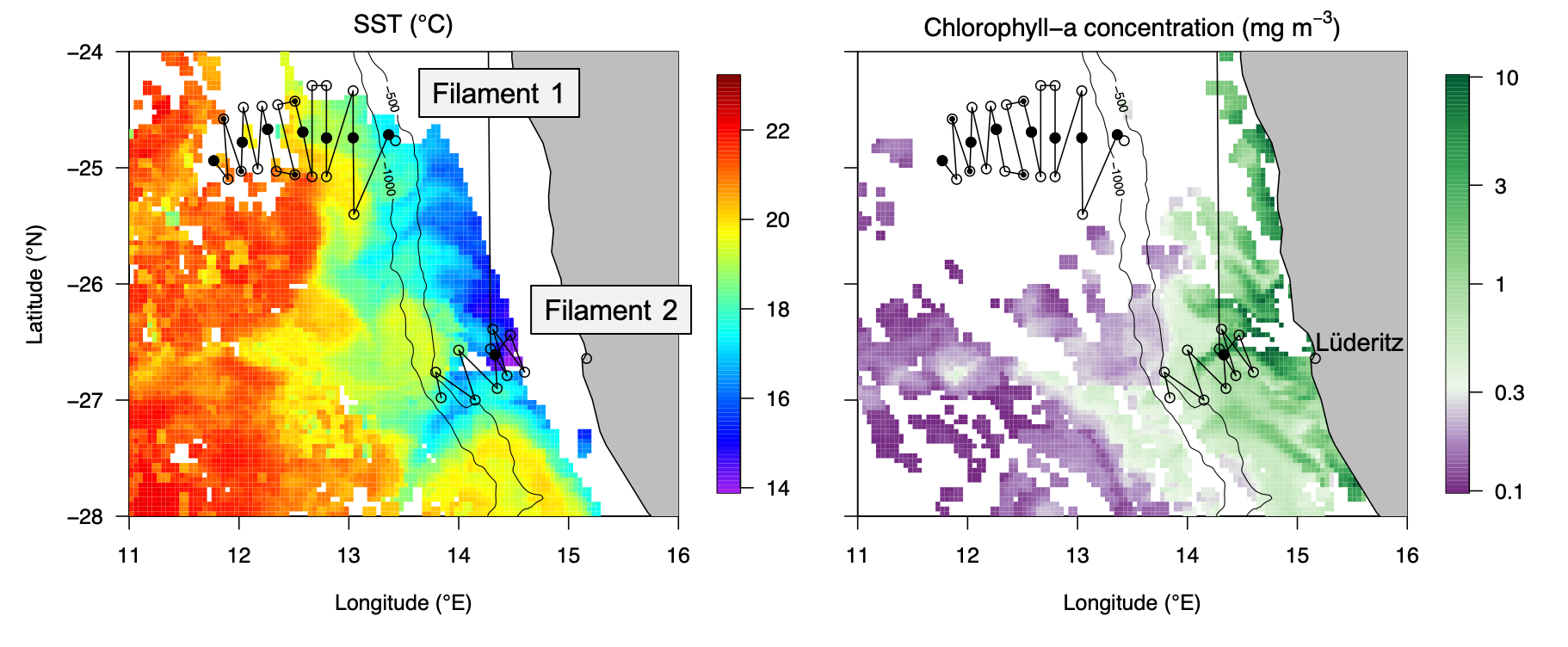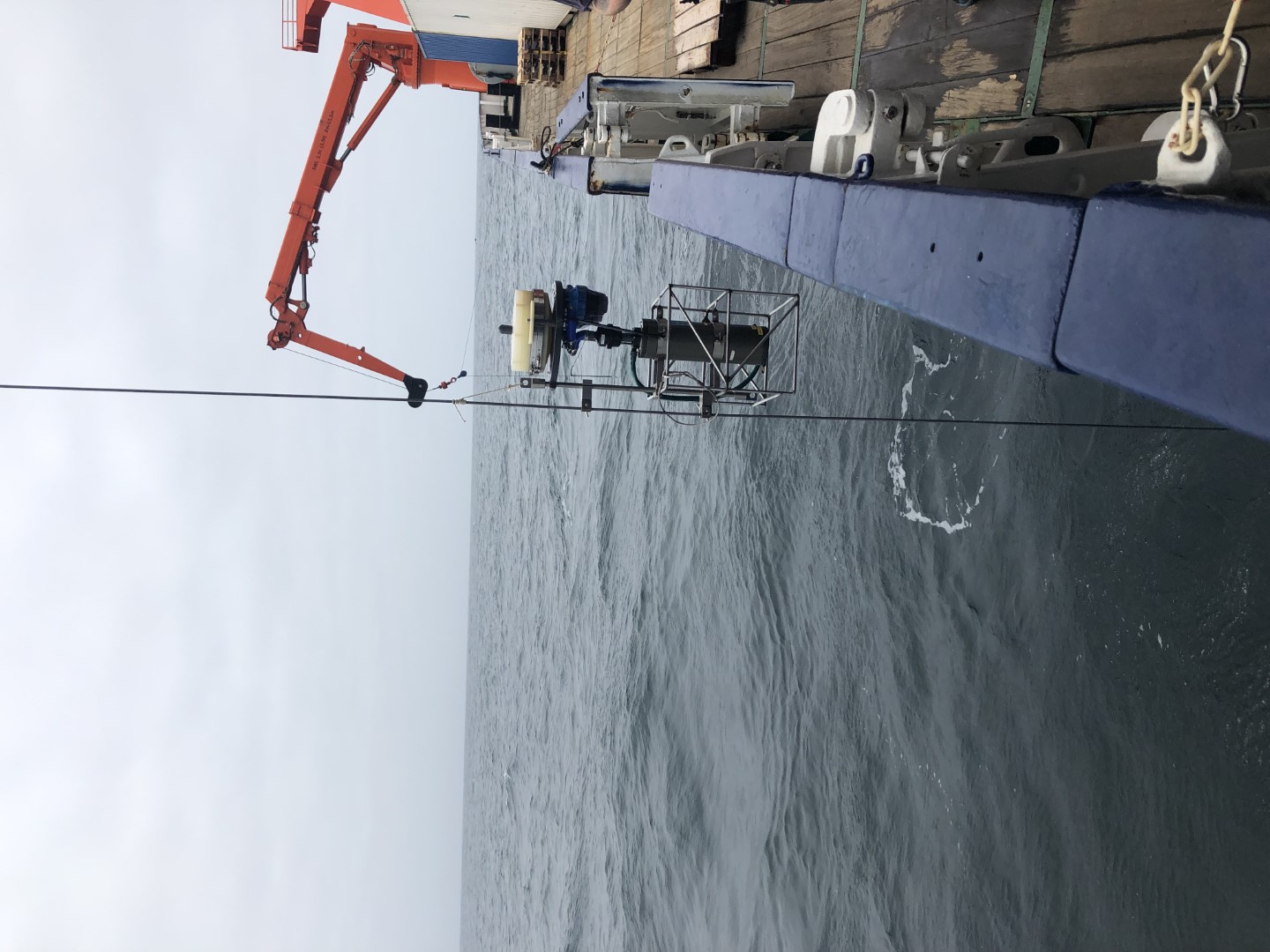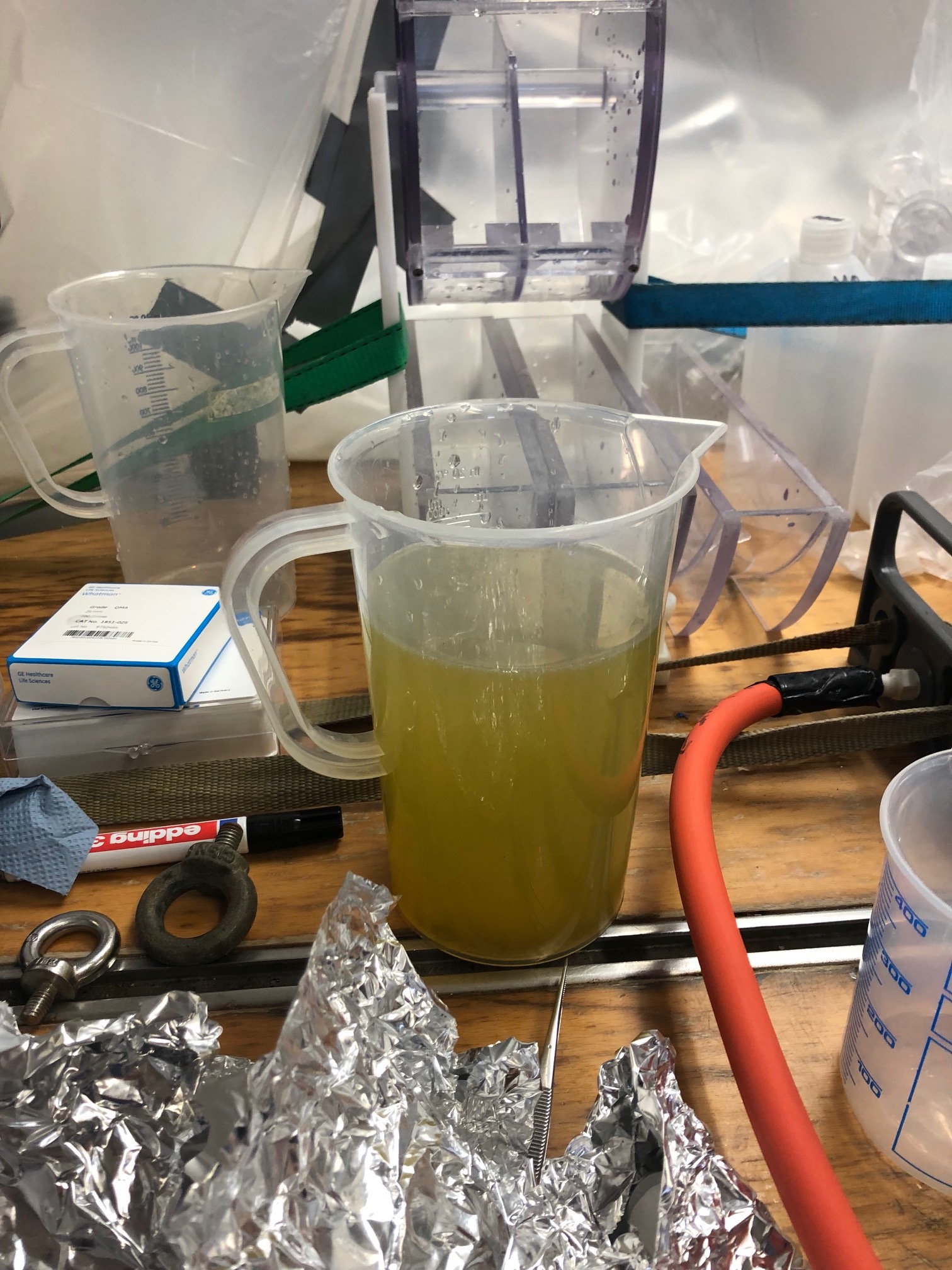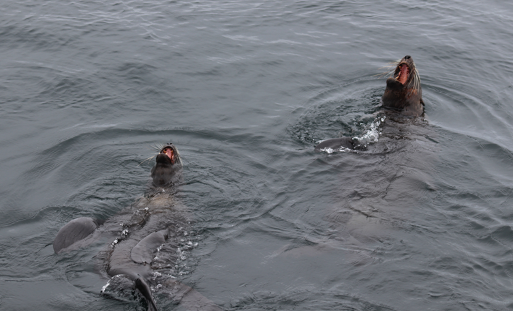3rd weekly report (05.02.2023 – 11.02.2023)
Saturday 11th February 2023
The start of the week began in Walvis Bay port as we waited for a replacement crew member to arrive. The scientists used the time to organize their labs and catch up with paperwork. We also had science seminars each day where initial results from the cruise and other more general scientific topics were presented.
At around ~18:00 local time on 07.02 we set sail with the replacement crew member on board. We are very grateful to all involved who worked hard to make the crew changeover happen quickly and smoothly! On leaving port we headed south to a new filament identified in recent satellite images of sea surface temperature. This second filament is located further to the south east than the first filament, with an origin around 70 km offshore from the Namibian coastal town of Lüderitz. We arrived in the region on the evening of 08.02, performed an overnight survey to identify the filament centre, then started the first main station at 08:30 (ship time) on 09.02. On reaching the filament site it was clear that we were in highly productive waters: the sea was greener (resulting from high concentrations of phytoplankton) with many sea lions and seabirds. This abundance of life is caused by the upwelling of deeper waters with high concentrations of phytoplankton nutrients. Over the coming week we aim to track how this cold, high nutrient water is entrained into a filament and then evolves chemically and biologically over time as it is transported offshore.

At each of the daily stations located within the centre of the filament we are conducting a deployment with so-called in-situ pumps. These are devices that are lowered into the water to specific depths, which then pump high volumes (1000-2000 L) of seawater through a series of filters and cartridges. The particles in the water are collected onto the filters and can subsequently be used for different types of chemical analyses. On this cruise, particles are being analysed for particulate organic carbon and nitrogen, amino acids and amino sugars (important food sources for bacteria), particulate biogenic silicate (mostly originating from the glass shells of particular types of microbes called diatoms), particulate inorganic carbon (calcium carbonate), and isotopes of the element thorium. The latter is of interest as we can use this as a chemical tracer of particle sinking rate. Specifically, thorium is very particle-reactive, meaning it sticks easily to particles. Therefore, when particles are produced in the surface ocean, for example by phytoplankton growth, thorium atoms stick to them. When these particles sink out of the surface waters to depth, they bring the thorium with them. This results in a thorium deficit at the surface ocean. From the size of this deficit, we can work out how much particulate carbon, nitrogen and other elements have been exported from the surface to depth. Ultimately, this will enable us to quantify how filaments regulate carbon and nutrient export as the chemistry and biology of filaments evolve.


The scientific team is pleased to be back out at sea and doing science after the days in port. There continues to be excellent cooperation between the scientists and Captain Korte and team, the food is very good and the weather favourable.
With best regards from 13.24 °E und 27.23 °S,
Tom Browning
GEOMAR Helmholtz Centre for Ocean Research Kiel
